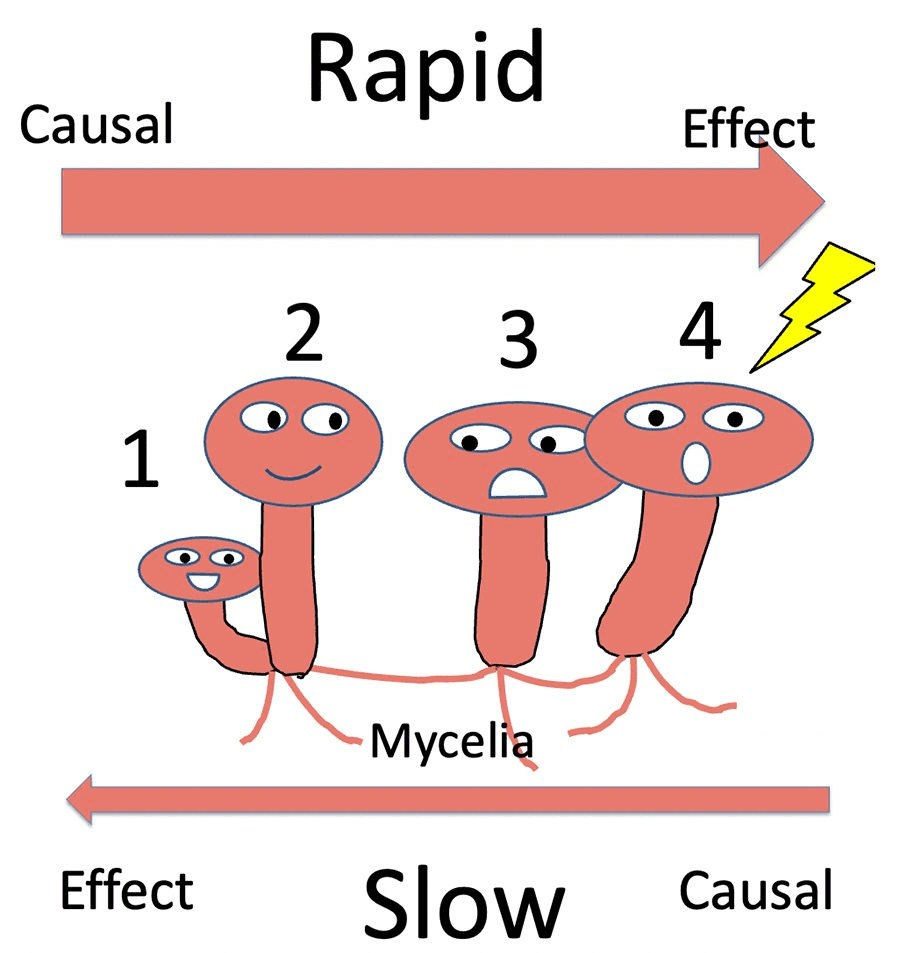Mushrooms have been found to exchange electrical signals that some scientists consider a form of communication. However, a new study suggests, the fungal telephone lines go quiet when their environment dries out. Just as some birds like to celebrate the arrival of rain with song, it seems mushroom chatter also comes to life with a little precipitation, although we still don’t know what they are saying.
Within the soil fungi connect to each other and share electrical signals through the mycelium network. The significance of this remains controversial, but some scientists see a parallel to the way the neurons of our brains pass messages electrically, an idea taken to extremes in the Avatar movies. Similar interactions among trees have led to the coining of the phrase “wood wide web”.
These signals involve trains of voltages that may be the equivalent of words. A paper last year reported these trains differ between species, but each fungal species studied had a roughly 50-word vocabulary. Japanese research investigated the timing of this activity, attaching electrodes to groups of wild Laccaria bicolor. In a new paper, they report near-silence at the end of a dry period, followed by chirpy activity following rain.
Although the study had a smaller scale than some previous research, it was the first time fungal communication has been studied in the wild, rather than in the lab – often cultivated on artificial media. Previous studies had also used fungi that are parasitic or feed on dead plant material. L. bicolor are Ectomycorrhizal fungi that wrap around the roots of pine, oak, and birch trees and form a mutually beneficial relationship with their hosts.
“In the beginning, the mushrooms exhibited less electrical potential, and we boiled this down to the lack of precipitation,” said first author Dr Yu Fukasawa of Tohoku University in a statement. “However, the electrical potential began to fluctuate after raining, sometimes going over 100 mV.”
Activity started 1-2 hours after the rain began and was mostly concentrated in an eight-hour period.
If mushrooms are talking to each other, and this remains debated, the conversation can sometimes be a bit one-sided, with signals going from one mushroom to another, without necessarily getting a reply. Most signals went between fruiting fungal bodies located close to each other, so it seems like having a chatty neighbor is an occupational hazard for quiet-preferring fungi as much as for humans.
Like humans, when mushrooms talk some have a lot to say and others only a little. Image Credit: ©Yu Fukasawa
Advocates of the theory that the signals represent a language suspect the signals are a way to coordinate growth in the face of changing external circumstances, and rain would certainly fit the bill. It is possible the mushrooms use the signals in a sort of nutrient trading, possibly between trees and other plants. However, it may just be hard for mushrooms to chat when largely dried out after an unusually long dry spell.
Raindrops carry electrical charges, particularly after passing through the canopy. However, follow-up experiments using dummy mushrooms made from melamine sponge suggest the contribution from the charge in the raindrops themselves is insignificant.
The study was published in Fungal Ecology.
Source Link: Mushrooms Get Chatty After It Rains
